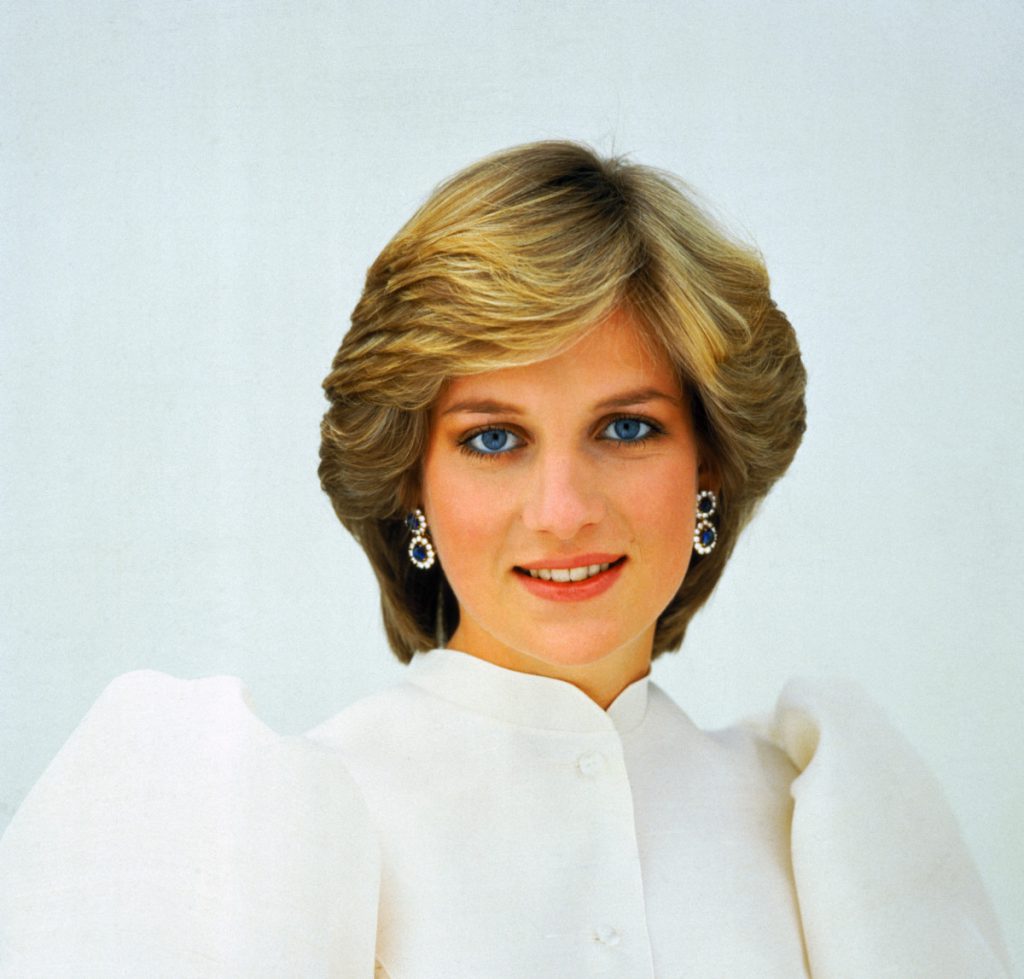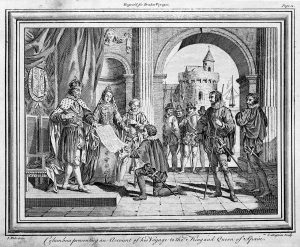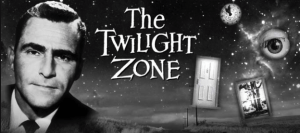Winner of the Fall 2019 StMU History Media Award for
Best Article in the Category of “People”
Two million people are cheering her name, 750 million eyes are upon her. She’s smoothing out her silk, ivory colored wedding dress embroidered with pearls and mother-of-pearl sequins. She is being transported to St. Paul’s Cathedral by five military police officers in a fairytale-like coach. Keeping her composure, she steps out of the stagecoach in her Cinderella-like wedding slippers. She walks up the steps of the Cathedral, head held high, the Spencer family tiara decorating her gorgeous short, blonde hair. As she enters the dome, all eyes are drawn to her glowing, innocent features and the twenty-five-foot train trailing behind; the opening song is played by one of the three orchestras that her fiancé has chosen. The date is July 29, 1981, marking the wedding of Prince Charles to Lady Diana. Diana knew that becoming Princess of Wales was going to be a great responsibility, one that couldn’t be taken lightly. She strongly believed it was either going to be a fairy-tale dream come true or a total nightmare; either way, it was too late that day for her to change her mind.1

Charles was absent for a lot of the first year of their marriage: he tended to his royal duties, participated in shooting, polo, and painting pictures. He lived a comfortable, no strings attached life with Diana that first year. Once, he even admitted to his past liaisons with some married women. They were deemed a “safer choice” because they would keep quiet—due to having families and husbands. Charles assumed Diana would fit perfectly into his lifestyle like a missing puzzle piece. This was not the case, as Diana and he had very different forms of entertainment and pastimes; there was also a rather large age gap of fourteen years.3 During their engagement, when Diana was nineteen and Charles was thirty-three, Prince Charles received a package. Diana, already suspecting Charles was hiding something, found a gold bracelet addressed to ex-lover Camila Parker-Bowles with the initials “F” and “G” intertwined; the initials were of the nicknames they had given to each other.4 “This was about two weeks before we got married…. So rage, rage, rage! ‘Why can’t you be honest with me?’ But, no, [Prince Charles] cut me absolutely dead.”5 Charles denied the accusations, making her feel paranoid and leaving her with second thoughts about marriage. Diana claimed she had considered canceling the wedding, discussing the situation with her two sisters, both responding with “your face is on the tea-towels so you’re too late to chicken out now.”6

The public viewed the wedding with a lot of admiration, so much that it blindsided them. The public was completely unaware that Diana could not handle the public scrutiny; her face was on every magazine cover and she was all the media talked about. Princess Diana was portrayed as calm and very put-together; she carried herself in a way that didn’t expose her weaknesses. This was the very mindset of the royal family, any form of unwanted exposure was immediately hidden or covered up, and she learned this a little too late. The wedding that was perceived as “a ceremony that bore the weight of centuries of national tradition” had a tragic story behind it.7
Diana would frequently visit the kitchen where she would participate in binge eating behaviors, such as eating endless bowls of ice cream and special snacks at request. Staff and friends were concerned about Diana’s dietary habits; she was so thin despite consistently raiding the fridge and eating excessive amounts of food in one sitting. Although they would frequently see her overindulge in food, Diana would make herself throw up five to six times a day. Diana claimed that her disorder was first triggered because of a comment Prince Charles made.8 “My husband put his hand on my waistline and said, ‘Oh, a bit chubby here, aren’t we?’ and that triggered off something in me—and the Camilla thing, I was desperate…. I remember the first time I made myself sick.”9

Diana started slipping into the deep end; her first pregnancy was tough on her body. Apart from morning sickness, Diana suffered from bulimia. Bulimia nervosa is characterized by recurrent episodes of binge eating followed by compensatory behaviors to prevent weight gain by self-induced vomiting, fasting, or excessive exercise. The onset of bulimia nervosa can be due to stressful life events and usually develops between adolescence and early adulthood. There is an increase in depressive symptoms and depressive disorders in affected individuals as well as a higher suicide risk. Mood disturbance begins at the same time or during the development of the eating disorder, but in other individuals, predates the illness.10
Diana became desperate; she would run around with a lemon knife. Diana knew something was wrong with her but didn’t know how else to ask for help. When she did reach out for help, Charles thought Diana was crying wolf and dismissed her threats. Charles became alarmed and overwhelmed by Diana’s frequent mood swings, her consistent crying, and obsession with his old mistress, Camilla Parker Bowles. He believed that she was being immature and seeking attention, so instead of helping his wife, he went riding on the Sandringham estate. Diana almost felt challenged by his response, so at two months pregnant, Diana placed herself at the top of a wooden staircase in Sandringham and threw herself down the stairs.11 “Very, very difficult pregnancy indeed. Sick the whole time, bulimia and morning sickness…. I didn’t know which way to turn at all…. Charles said I was crying wolf and I said I felt so desperate, and I was crying my eyes out, and he said, ‘I’m not going to listen. You’re always doing this to me. I’m going riding now.’ So I threw myself down the stairs.”12
Some could claim that Diana was immature and naive and in reality, she was just a child. Diana had just become a young adult when they were married; she still had an illusion of a perfect marriage, one that wouldn’t suffer from difficulties. Her mindset was heavily influenced by her childhood; Diana’s parents’ troubled marriage and their frequent fights, even after their divorce. She didn’t want her marriage to end up like her parents. Diana believed that a Royal marriage would complete the pretty picture she painted in her head, it couldn’t possibly be any less than perfect—after all, that is what she had read in novels.13
At this point, Diana knew that she wasn’t going to get what she wanted or what she needed: stability and compassion. Instead, she was being scorned and her feelings were minimized. “I was thrown into the deep end,” she said of royal life. “Nobody ever helped me at all.” This incident was one of many cries for help during their first year of marriage.14
Diana made several other threats to her life; she began engaging in self-mutilation. In one incident Diana threw herself against a glass display cabinet at Kensington Palace and shortly after, slashed her wrists with a razor blade. Even during an argument with Prince Charles, she picked up a penknife and cut her chest and thighs.15 Still, Diana kept up a happy-go-lucky persona for the public and continued her duties as Princess of Wales. In the midst of a troubled time, she grew and matured; she found herself. Even if Charles solely wanted to please his parents by marrying Diana when his heart belonged to someone else, she was beloved by so many and the public saw her as one of their own. Diana was one of the only Royals that didn’t make the masses feel like less than they are.16 She was able to find herself through the volunteer work she engaged with and by connecting to the public.17
Diana was perceived as having it all, being the “It Girl” only to be revealed that within those palace walls, she was living a nightmare.
- Anne Matheson, “A Day of Splendour and Romance,” Australian Women’s Weekly (2018): 48. ↵
- Barbara Cartland, “Royal Marriage: When Life isn’t a Romantic Novel,” Newsweek 120 (1992): 72. ↵
- A Biographical Encyclopedia, 2002, s.v. “Women in World History,” 591. ↵
- Andrew Morton, Diana: Her True Story (New York: Pocket Books, 1992), 90. ↵
- Andrew Morton, “Diana’s Secret Tapes,” People 88 (2017): 88. ↵
- Andrew Morton, Diana: Her True Story (New York: Pocket Books, 1992), 91. ↵
- Barbara Cartland, “Royal Marriage: When Life isn’t a Romantic Novel,” Newsweek 120 (1992): 72. ↵
- Andrew Morton,Diana: Her True Story (New York: Pocket Books, 1992), 96. ↵
- Andrew Morton, “Diana’s Secret Tapes,” People 88 (2017): 88. ↵
- American Psychiatric Association, Diagnostic and Statistical Manual of Mental Disorders Fifth Edition (Arlington, VA: American Psychiatric Association, 2013), 345-347. ↵
- Andrew Morton, Diana: Her True Story (New York: Pocket Books, 1992), 104-105. ↵
- Andrew Morton, “Diana’s Secret Tapes,” People 88 (2017): 88. ↵
- Barbara Cartland, “Royal Marriage: When Life isn’t a Romantic Novel,” Newsweek 120 (1992): 72. ↵
- Andrew Morton, “Diana’s Secret Tapes,” People 88 (2017): 88. ↵
- Andrew Morton, Diana: Her True Story (New York: Pocket Books, 1992), 105. ↵
- Martha Duffy, “Fractured Fairy Tale,” Time Magazine 147 (1996): 60. ↵
- Encyclopedia of World Biography, 2004, s.v. “Diana Princess of Whales,” 531. ↵



102 comments
Phylisha Liscano
I enjoyed reading this article! Learning that Lady Diana was going though so much behind closed doors is very saddening. Growing up and hoping for the right man was her dream, but being told to represent the royal family in a certain way just for her husband not to be in love with her has to be one of the worst feelings. She could’ve found someone who truly loved her and lived a beautiful life. The fact that Prince Charles was one of the reasons she suffered with bulimia is heartbreaking, especially when she tried to confide in him. Throughout all of that Lady Diana represented herself and she is one of the women I show respect for.
Aaron Sandoval
This article was very well written, I thought the use of quotes throughout the article was a great way to show the struggles that Princess Diana endured. I also really enjoyed the in-depth description of bulimia and how you were able to incorporate that description into the article. Overall this article was very well written and greatly detailed the struggles faced by Princess Diana and the complete disregard for her mental health by Prince Charles and the members of the royal family.
Madeline Emke
This article depicted the hidden truth in Princess Diana’s life. I have friends that know so much about her life and death, but this article provided me a brief overview without providing too much information. Additionally, the article clearly illustrated Diana’s mental illnesses while also describing the lack of treatment she was provided because of the public eye. I think she was incredibly brave for putting on an “It Girl” face so the public could not see the pain she was going through.
Jacqueline Guardia
I had never heard this part of Diana’s story. It is so sad that so many people were expecting so much from her and her being a young-adult with that much pressure, I can only imagine the pain she was going through. The death of Diana affected millions of people and we are still remembering her as a great humanitarian that helped people using her voice and image. This is a great article.
Maria Ferrer
This article is very well written and really enjoyed reading it. It is just so sad to see everything that was going on behind the tabloids stories and the wall of the castle. Princess Diana went through a lot in her life, however she didn’t deserve the treatment she received from the royal family. After reading how Prince Charles treated her and how publicly her life was, it came to no surprise that she had bulimia. After all, she was not perfect but she did what she could with what she had and I can’t imagine the pressure she had after marrying a Royal.
Ariel Howell
This article is really sad to read about Princess Diana . The cheating she went though in her life, having to deal with these things while all eyes were on her. This article does a great job at really going into detail on the toxic marriage of Prince Charles and Princess Diana.
Camryn Blackmon
Hi Vanessa,
Your article on Princess Diana is very well written. I love how you started the article with an iconic image that many people experienced or witnessed in images or film. Princess Diana is a huge pop culture icon, and you included important details to her life that many people probably did not see at the time. I think it was significant to include her struggles with mental health, including her eating disorders, it is something that a lot of people go through, but there is not a lot of conversation on the issue.
Adrianna Hernandez
This article was very sad and interesting. It’s crazy to believe that behind closed doors she was suffering but when she would be in public she showed her happiness. This article was written really well in giving detail about her marriage to Prince Charles and her having bulimia. When all she ever wanted was to receive love and affection from Prince Charles since her parents didn’t give her love or affection.
Franchesca Baldwin
I’m researching Princess Diana right now and this article was vey helpful. She had the “fairytale” life as someone beautiful, wealthy, and popular but behind it she was treated wrongly pretty much her entire life. She has major issues as well, as stated, but she was young and it could be debated she didn’t know any better given a combination of many things. Her ending is tragic and I think if she had lived longer she could’ve done a lot of good for the world.
Maria Obregon
Before reading this article, I had no idea that Princess Diana went through these things during her lifetime. It is so sad and so heartbreaking thinking of how she would hide all of this in the public eye, but would suffer in private. It is also so heartbreaking knowing what went on during her marriage and inside the palace. I knew things were not good for her in her marriage, but I did not imagine it was this bad. She just wanted the perfect marriage, but what she received was far from that.